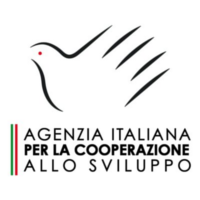In Eastern Sudan, in Al Mafaza locality, located 180 km from Gedaref, the population counted 24,000 displaced people as of the end of February 2024, a consequence of the profound insecurity situation affecting the El Fao area, causing massive population movements. Very few humanitarian interventions have occurred in the Al Mafaza area, where, since May 2024, we have been providing humanitarian aid to internally displaced persons, refugees and host communities through the Emergency initiative in response to the urgent needs of IDPs, host communities and refugees in Gedaref State affected by natural disasters and conflicts to promote social cohesion and durable solutions, funded by the Italian Development Cooperation Agency (AICS).
The intervention, active in both Al Mafaza and Gedaref with our local partner, Alashraq, aims to ensure access to safe water, sanitation facilities and waste management and disposal systems for the most vulnerable people, and to strengthen local capacity to respond to floods and flooding that occur during the rainy season through disaster risk reduction interventions. In fact, the area of intervention of the project is affected annually by heavy flooding, which aggravates the population's sanitation conditions, increasing the risk of epidemics such as cholera, Rift Valley fever, dengue, and chikunguya, and worsening the situation of the area's already inadequate sanitation services.
Specifically, the project includes the rehabilitation of one of two key water stations in Al Mafaza, but also the distribution of water treatment kits to 200 vulnerable households. In addition, the project's team of humanitarian workers is involved in the construction of 10 emergency latrines that will benefit a total of 500 people, as well as the construction of flood prevention barriers to protect roads and homes with sand and gravel.
Activities are being carried out with the direct involvement of Community Flood Management Committees, groups made up of community members who are being equipped to prevent and respond to flooding and inundation caused by climate shocks, thus stimulating the active participation of communities and enhancing the human resources already existing within them. Through the Committees, waste collection activities and community awareness campaigns on good practices in waste collection, waste management, and water potability are also organized. These campaigns are aimed at increasing community awareness about good hygienic practices in waste collection and disposal with a view to avoiding soil and water contamination.
